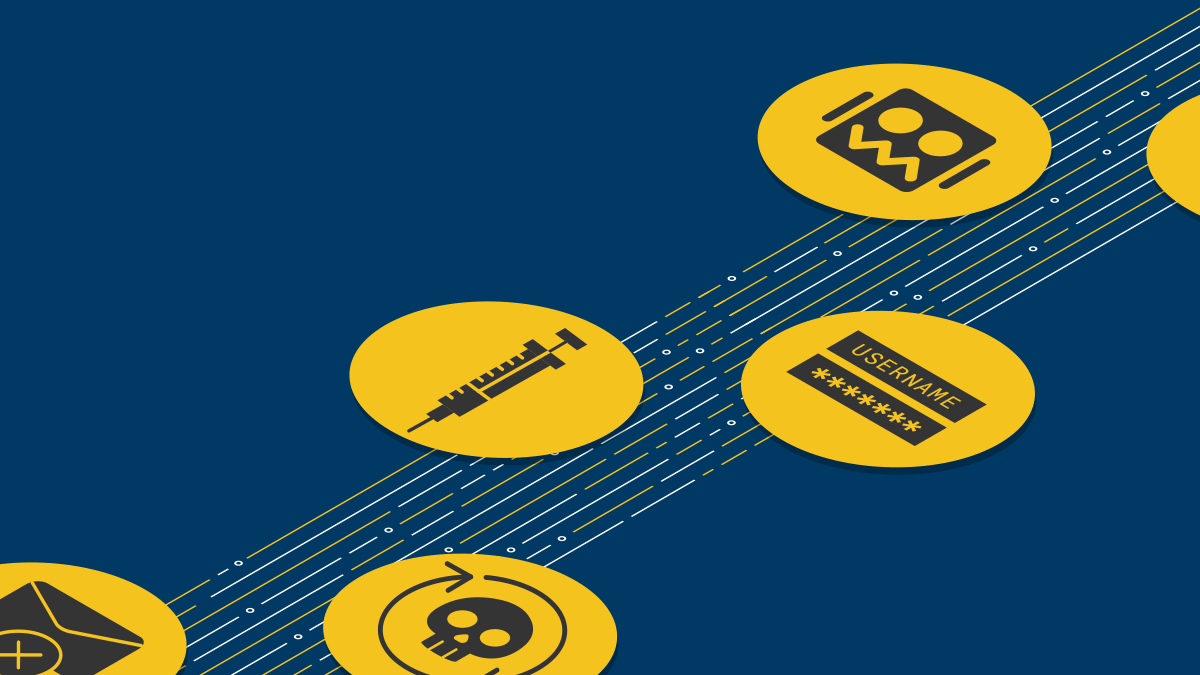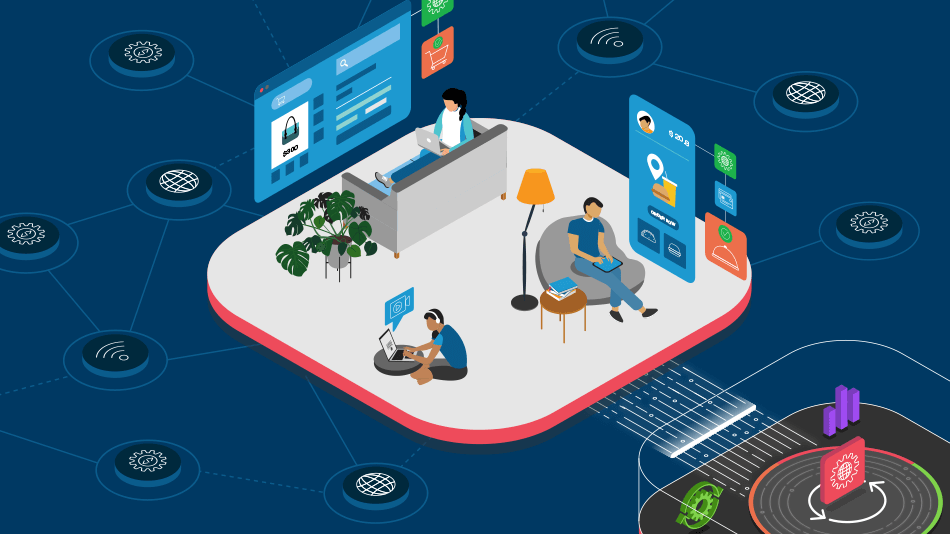What is Application Security?
Application security employs technologies, processes, and risk management procedures to protect applications from malicious actors and destabilizing threats.
Application security is the practice of implementing measures and safeguards to protect software from a myriad of threats throughout the application lifecycle, including vulnerability exploits, misconfiguration, business logic abuse, and unauthorized access. It involves a range of techniques, including secure coding practices, vulnerability assessments, and security testing to ensure the confidentiality, integrity, and availability of applications and their data. It also includes security solutions such as web application firewalls, bot management tools, and DDoS mitigations.
Application security is continuously evolving to keep pace with emerging technologies, evolving threat landscapes, and changing development practices. Today’s applications are often available over various networks and connected to multiple clouds or edge environments, increasing risk by expanding the attack surface.
In addition, most organizations operate using a mix of traditional and modern app architectures, increasing the complexity of application security. According to the F5 State of Application Strategy, respondents reported that more than one third (40%) of their app portfolio are modern (including mobile apps and use of microservices) but nearly all respondents also report that they still operate traditional apps as well. “As a result, a large majority (85%) of organizations face the challenge of managing and securing both modern and traditional apps, often across a variety of hosting environments.”
These complex, blended application environments are catnip to malicious actors who continue to refine their techniques for penetrating security defenses. Application security must be an ongoing activity during all phases of application design, development, and deployment. Application security best practices, security testing, and security technologies are all necessary for identifying potential application vulnerabilities before attackers can use them to breach networks and compromise data. Given the complexity of software supply chains and proliferation of open-source software, there is increased focus on software bill of materials (SBOM) and the need to harden automation pipelines that can introduce risk.
Common application security threats include the following:
- Injection attacks. Injection flaws occur when untrusted data is inserted into command or query languages, leading to unintended execution of malicious commands. This includes SQL, NoSQL, OS, and LDAP injection attacks.
- Insecure design. This is a broad category representing different weaknesses, such as missing or ineffective security controls and architectural flaws. These flaws relate to the way the application is designed, and call for the increased use of threat modeling, secure design patterns and principles, and reference architectures.
- Security misconfigurations. A lack of security hardening in web application frameworks, platforms, servers, or security controls can lead to unauthorized access, exposure of sensitive information, or other security vulnerabilities.
- Broken access controls. Insufficient enforcement of access controls and authorization can allow attackers to access unauthorized functionality or data by bypassing controls, manipulating parameters, or acting outside of their intended permissions.
- Cryptographic failures. Inadequate protection of sensitive data, such as credit card numbers, personally identifiable information (PII), or healthcare records occurs when data is not properly protected in transit and at rest. Cryptographic failures can lead to data breaches, unauthorized access to confidential information, and non-compliance with data privacy regulations, such as the EU General Data Protection Regulation (GDPR), and financial standards like PCI Data Security Standards (PCI DSS).
The consequences of these application security risks may include financial losses due to data breaches, legal and regulatory repercussions, and damage to brand reputation and customer trust.
The following five types of application security measures are fundamental for building a robust application security posture and protecting against a wide range of application-level attacks and vulnerabilities.
- Authentication and authorization controls. Authentication verifies the identity of users or systems accessing an application, ensuring that only authorized entities can access sensitive resources using methods such as passwords, multi-factor authentication (MFA), and biometrics. Authorization, on the other hand, determines what actions or resources a user can access once authenticated, enforcing proper permissions and access controls.
- Input validation and output encoding. Input validation ensures that user-supplied data is properly validated, sanitized, and checked for potential malicious content before being processed. This prevents injection attacks, such as SQL injection or cross-site scripting (XSS). Output encoding ensures that data is correctly encoded when being presented to users, preventing XSS and other output-related vulnerabilities.
- Session management. Session management involves securely managing user sessions and maintaining the state of a user's interaction with the application. It includes generating secure session identifiers, enforcing session timeouts, protecting session data from tampering, and preventing session fixation or session hijacking attacks.
- Cryptography. Cryptography is the practice of using cryptographic algorithms and protocols to protect sensitive data. It includes encryption for data at rest and in transit, secure key management, hashing for password storage, digital signatures for data integrity and authentication, and secure communication protocols like SSL/TLS.
- Error handling and logging. Effective error handling helps prevent information leakage that could assist attackers. Logging and monitoring security-relevant events, such as failed authentication attempts or suspicious activities, are crucial for detecting and responding to security incidents. Properly implemented logs can assist in forensic investigations and aid in identifying security breaches.
Implementing and adhering to application security best practices helps create a strong foundation for effective security controls. It is important to integrate security considerations throughout the entire software development lifecycle and continuously reassess and improve security measures as new threats and vulnerabilities emerge.
Key best practices for effective application security include:
- Conducting a comprehensive threat assessment to identify potential risks and vulnerabilities specific to your applications. This includes analyzing the application's architecture, dependencies, and potential attack vectors.
- Ensuring that application components, servers, frameworks, and platforms are securely configured. Follow security best practices and hardening guidelines provided by vendors. This includes disabling unnecessary services, securely managing credentials, and ensuring all components are patched with the latest available versions.
- Shifting security left by incorporating security considerations early in the software development lifecycle. Integrate security practices, such as secure coding, threat modeling, and security testing, from the initial design phase to ensure potential vulnerabilities are addressed proactively.
- Implementing robust authentication mechanisms, such as strong passwords, multi-factor authentication (MFA), or biometric authentication to verify user identities. Enforce proper authorization controls to ensure users have appropriate access privileges, limiting access to sensitive resources and functionality, and preventing lateral spread and privilege escalation.
- Developing a risk-based approach to prioritize remediation efforts. Focus on addressing high-risk vulnerabilities first, based on their potential impact and exploitability. Establish a clear process for timely remediation.
- Implementing robust monitoring and logging mechanisms to detect and respond to security incidents effectively. Monitor for suspicious activities, failed login attempts, and anomalous behavior. Maintain audit logs to aid in incident investigation and response.
Application security is an ongoing process and requires a multi-layered approach to ensure comprehensive protections. Use the following check list to regularly reassess and update security practices to help ensure that your applications remain resilient against evolving security risks.
- Conduct thorough security assessments and code reviews. Perform comprehensive security assessments to identify potential vulnerabilities and weaknesses in your applications. This includes using automated tools to scan for common vulnerabilities and leveraging dynamic code analysis to uncover security flaws.
- Implement secure coding practices and frameworks. Adopt secure coding practices from the outset, including the use of industry-recognized coding standards and secure coding frameworks and libraries that have undergone rigorous security testing and are actively maintained by the developer community.
- Regularly update and patch applications. Secure third-party components and regularly update and patch libraries, frameworks, and dependencies used within the application to mitigate against known vulnerabilities.
- Perform vulnerability and penetration testing. Conduct regular vulnerability testing using automated scanning tools to identify potential vulnerabilities in the application, including Dynamic Application Security Testing (DAST). Perform penetration testing that simulates real-world attacks to evaluate the security posture of the application and uncover any weaknesses that automated tools may have missed. These findings can be incorporated into web application firewall security policies to provide a critical stopgap against vulnerability exploitation.
- Educate developers and promote a security-first mindset. Provide security training and awareness programs for developers to enhance their understanding of common vulnerabilities and secure coding practices. Emphasize the importance of implementing security throughout the development process and encourage developers to prioritize security considerations.
Application security testing plays a vital role in detecting and identifying vulnerabilities, weaknesses, and flaws before they can be exploited by attackers.
Static Application Security Testing (SAST) analyzes the source code, byte code, or binary code of an application to identify security vulnerabilities and weaknesses. It is usually conducted during the development phase, with SAST tools using a combination of pattern matching, code analysis, and rule-based techniques to identify common vulnerabilities and coding errors.
Dynamic Application Security Testing (DAST) focuses on identifying vulnerabilities and weaknesses in a web application in real time, while the application is running. With DAST, security scanners or tools are used to interact with the application, sending various requests and inputs to identify vulnerabilities.
Penetration testing involves actively assessing an application's security by simulating real-world attacks. In this test, skilled security professionals attempt to exploit vulnerabilities in the application to determine its resilience against different attack vectors.
Organizations often use a combination of these testing methods to achieve a thorough assessment of application security. Threat modeling tools such as STRIDE and DREAD can also provide useful guidance for employing these risk management techniques.
Secure coding forms the foundation for building resilient and secure software applications. It involves following established coding standards, best practices, and guidelines to minimize the risk of introducing security flaws and common vulnerabilities, such as injection attacks, buffer overflows, or insecure direct object references, during the development process. Developers should stay up to date with the latest security countermeasures and defend against emerging threats by reducing the attack surface of the application.
Vulnerability management also plays a crucial role in identifying and addressing application security flaws by using automated tools or manual techniques to identify potential vulnerabilities, misconfigurations, and weaknesses in the application's code, libraries, or dependencies. Once vulnerabilities are identified, they can be prioritized based on their severity, exploitability, and potential impact. This allows organizations to focus their resources and efforts on addressing high-risk vulnerabilities that pose the greatest threat to the application's security.
Secure coding and vulnerability management are ongoing processes that should be integrated into the development lifecycle to provide application security protections and consistent policy enforcement across all clouds and architectures.
Application security controls are vital for safeguarding applications and protecting sensitive data. These include authentication controls, which ensure that users or systems attempting to access an application are verified and authorized. Strong authentication mechanisms, such as passwords, multi-factor authentication (MFA), or biometric authentication, validate user identities and protect against unauthorized access.
Access controls also help protect applications by restricting user permissions and determining what actions or resources users can access within an application based on user roles, privileges, or attributes.
Application security controls also include strong encryption algorithms and secure key management practices to help prevent unauthorized access to sensitive information even if the data is compromised.
In addition, auditing and logging mechanisms enhance application security by recording security-relevant events and activities within the application, such as user actions, failed login attempts, access control changes, and critical system events. Maintaining logs and performing audits supports monitoring and forensic analysis, and can help detect security incidents or policy violations.
As organizations harness the power of multiple cloud providers and leverage edge computing resources, the increasingly distributed nature of application design makes app security a much more complex endeavor.
Distributed cloud environments are often composed of modern, microservices-based applications that are designed to be modular, scalable, and interconnected. This architecture offers numerous benefits but also introduces new security risks. Each microservice represents a potential attack surface and avenue for lateral spread, necessitating specialized security measures.
To achieve comprehensive security in distributed application environments, organizations must augment traditional network firewalls with app and API security solutions. While network firewalls excel at enforcing network policies and inspecting traffic at lower layers of the network stack, they are not effective at detecting and mitigating threats at the application layer, such as cross-site scripting (XSS), SQL injection, and API abuse.
As organizations embrace distributed application environments across multi-cloud and edge, the need for robust security measures across all layers becomes ever more critical. By integrating app and API security solutions alongside traditional network security measures, organizations can ensure comprehensive protection for their modern multi-cloud and edge applications.
Securing mobile applications presents unique challenges due to the specific characteristics and operating environments of mobile devices. Mobile applications leverage different architectural patterns as compared to web applications and need to run on a wide range of devices with varying operating systems, versions, and hardware capabilities. This diversity increases the complexity of ensuring consistent security across different platforms, making it difficult to address vulnerabilities and apply security controls uniformly.
Moreover, mobile operating systems such as iOS and Android restrict the level of control that application developers have over the underlying system, which can impact the implementation of certain security measures. In addition, mobile devices handle a vast amount of personal and sensitive data, including location, contacts, and personal communications. The risk of data leakage through insecure communication channels, unsecured storage, or inadequate data encryption is a significant concern for mobile application designers.
Secure data storage practices, such as encryption, secure key management, and secure file handling, are critical to prevent data breaches in case of device loss, theft, or compromise, as are implementing measures like code obfuscation and anti-tampering techniques. Regular security testing and assessments, mobile device management (MDM) solutions, and user education are also essential components of a robust mobile application security strategy.
It is also imperative to prevent client-side tampering as bad actors may plant malware or keyloggers to exfiltrate data, unbeknownst to users.
Robust web application security is critical for multiple reasons. With the increasing digitization of services, more and more sensitive data is stored and processed online in web applications. Web application security helps protect this data from unauthorized access, compromise, and theft.
In addition, web applications are critical for business operations in many organizations, and any disruption or compromise can significantly impact the availability and reliability of these applications. Web application security helps ensure that digital services that drive revenue and customer satisfaction are protected, despite increasing risk from cyberattacks and other exploits.
Many industries are also subject to strict regulations regarding data privacy and security. By implementing robust web application security measures, businesses can ensure that they remain compliant with these mandates.
Common web application vulnerabilities include SQL injection attacks and cross-site scripting. These exploits enable attackers to gain unauthorized access to sensitive areas of the application or the underlying server infrastructure, allowing them to extract sensitive data or login credentials, manipulate application behavior, or escalate privileges to gain control over the application. Automated attacks such as credential stuffing and brute force attacks are also commonly directed at web applications.
To mitigate the risks associated with these attacks, organizations should implement secure coding practices, input validation, output encoding, and follow security best practices.
Regular security testing is also important, including DAST, SAST, and penetration testing. Bot management solutions that can prevent account takeover (ATO) and fraud are also needed for critical business logic such as login, create account, reset password, shopping cart, and money transfer functions.
New technology developments and trends continue to evolve, requiring organizations to adapt their application security measures as their customers increasingly rely on digital experiences to work, bank, shop, access healthcare, travel, and play. Following are some notable trends and challenges in application security.
- Cloud-native application security. With the widespread adoption of cloud computing, organizations are developing and deploying cloud-native applications that are built using microservices architecture and containerization. To ensure a comprehensive security posture in environments that may include multiple cloud locations and cloud providers, it is essential to ensure that application security testing is orchestrated across the entire development process, covering all levels of application security, including code, dependencies, and cloud configurations.
- API security. As organizations increasingly expose APIs for third-party integration, securing these interfaces becomes critical. Modern applications often rely on multiple APIs, increasing the complexity of securing the entire API ecosystem. Each API might have different security requirements, authentication methods, and access controls, making it difficult to maintain a consistent and comprehensive security posture. Challenges in API security include protecting against attacks like injection, improper authentication and authorization, and ensuring data privacy and integrity.
- Application security in distributed multi-cloud environments. Many organizations face the challenge of an expanding attack surface that spans traditional and modern application architectures and multiple clouds, on-prem data centers, and edge sites. Enabling the management and enforcement of consistent security policies for applications and digital services across distributed deployments is highly complex. But by using a consistent set of multi-cloud application security and delivery solutions across application and API portfolios, organizations can strengthen security, improve performance and resilience, and unify policies across on-premises, multi-cloud, and edge environments.
Application security involves a broad selection of tools and methodologies, but all aim at the same goal: Identifying weaknesses and vulnerabilities and fixing them before attackers can exploit them.
At F5, we understand that application security is about creating a safer digital world, and our application and API security solutions reduce the operational complexity of hybrid and multi-cloud environments by consolidating protection for applications and digital services and consistently enforcing security policy.
That means that organizations can securely connect between locations within a single cloud service provider or across different providers, as well as natively connect and secure distributed digital services, giving end users superior security, availability, and performance while reducing operational complexity.
F5 offers a comprehensive suite of security offerings that deliver robust protection for apps, APIs, and the digital services they power. Our security solutions just work—for legacy and modern apps, in data centers, in the cloud, at the edge, in the architecture you have now, and the ones that will support your organization in the years to come.
Infographic
The OWASP Top 10: A New Wave of Risk ›
REPORT
Continuous API Sprawl ›
ARTICLE
2023 DDoS Attack Trends ›




